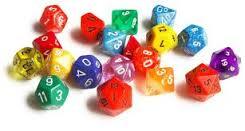An -sided die

Jorge has an -sided fair die and wonders how many times he would need to roll it until he has rolled all the numbers from to (in any order).
He does a quick calculation and discovers that the expected value for the number of rolls is 91 when rounding to the nearest integer.
How many sides does his die have?
Clarification: One distinct number from to is printed on each face of the die.
Image credit: ravnerdwars.info
Other Expected Value Quizzes
The answer is 24.
This section requires Javascript.
You are seeing this because something didn't load right. We suggest you, (a) try
refreshing the page, (b) enabling javascript if it is disabled on your browser and,
finally, (c)
loading the
non-javascript version of this page
. We're sorry about the hassle.
This is an example of the famous "Coupon Collector's Problem" .
The expectation value for "collecting" N different objects (or in this case numbers on a die) is given by:
E ( N ) = N ( 1 / 1 + 1 / 2 + . . . + 1 / N )
This gives E ( 2 4 ) = 9 0 . 6 2 . ( 9 1 when rounded to the nearest integer)